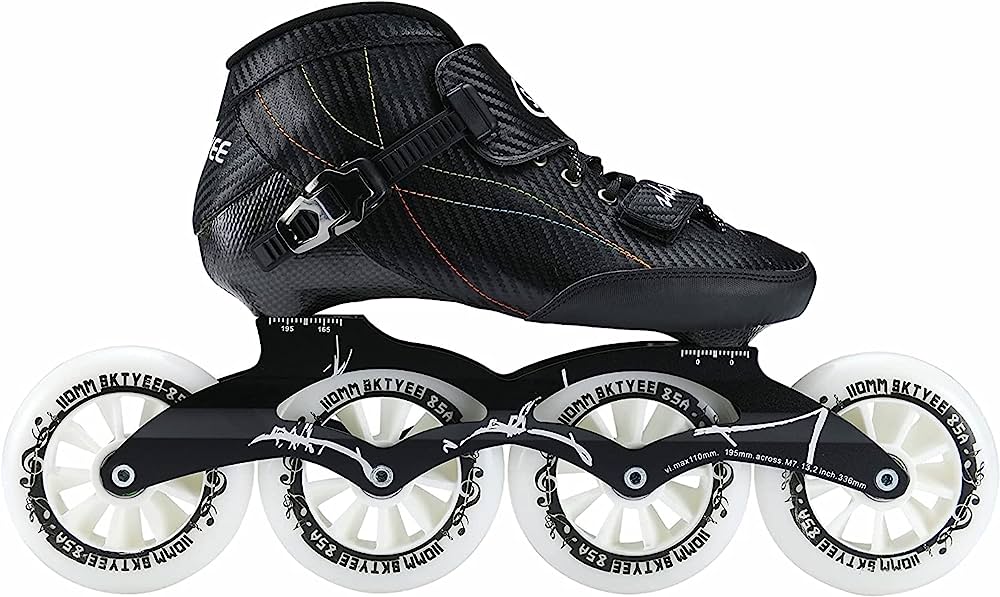
Learning how to brake properly while inline skating is essential for your safety and enjoyment. Braking techniques can vary depending on your skill level and the type of skates you have, but there are several basic techniques that can help you stop safely and effectively. In this article, we’ll explore those techniques and provide tips for mastering the art of braking while inline skating.
Basic heel brake
The most common braking technique for inline skates is the basic heel brake. This technique involves dragging one foot behind you while keeping the other foot in front. The brake is located on the back of the skate, near the heel.
To use the heel brake, lift your toe off the ground and shift your weight onto the back foot. Press the brake down onto the ground with your heel, exerting steady pressure until you come to a complete stop. Make sure to keep your knees bent and your weight low to maintain balance and control.
When first learning this technique, it’s important to practice on a flat, smooth surface with plenty of space. Practice stopping gradually at first, gradually building up your speed and pressure on the brake as you gain confidence and control.
T-stop
Another popular braking technique for inline skates is the T-stop. This technique involves dragging one foot behind you at a right angle to your forward foot, creating a T-shape. The foot that’s dragging is used to slow down and eventually stop.
To perform a T-stop, lift your front foot slightly and pivot it to a 90-degree angle. Place your back foot behind your front foot, perpendicular to it, with the wheels in contact with the ground. Shift your weight to your back foot and press down on the wheels with the back foot, using the friction to slow down and stop.
It’s important to keep your knees bent and your weight low while performing a T-stop to maintain balance and control. Practice on a flat, smooth surface with plenty of space, gradually building up your speed and pressure on the back foot as you gain confidence and control.
Power slide
A more advanced braking technique for inline skates is the power slide. This technique involves sliding both feet sideways while turning in the direction of the slide, using the friction to slow down and stop.
To perform a power slide, start by turning your body in the direction of the slide, shifting your weight onto your back foot. Then, lift your front foot and pivot it to a 90-degree angle, placing it behind your back foot. Slide both feet sideways, using the friction of the wheels to slow down and stop.
The key to performing a power slide is to maintain balance and control while sliding sideways. It’s important to keep your knees bent and your weight low, and to practice on a flat, smooth surface with plenty of space. This technique requires a lot of practice, so be patient and take it slow at first.
Plow stop
A plow stop is a technique that’s commonly used by ice skaters, but it can also be adapted for inline skating. This technique involves turning your skates inward and pushing them out to the sides, using the friction to slow down and stop.
To perform a plow stop, start by turning your skates inward so that the wheels are angled toward each other. Then, push your skates out to the sides, using the friction between the wheels and the ground to slow down and stop.
It’s important to keep your knees bent and your weight low while performing a plow stop, and to practice on a flat, smooth surface with plenty of space. This technique can be difficult to master, so take it slow and be patient.
Brake pad replacement
Finally, it’s important to keep your brake pads in good condition to ensure effective braking. Over time, brake pads can wear down and lose their effectiveness, so it’s important to check them regularly and replace them when necessary.
To replace a brake pad, first locate the brake on the back of your skate. Then, remove the old brake pad by unscrewing the bolts that hold it in place. Replace the old pad with a new one, making sure to align it properly with the brake.
Conclusion
Learning how to brake properly while inline skating is essential for your safety and enjoyment. Basic techniques like the heel brake and T-stop are great for beginners, while more advanced techniques like the power slide and plow stop require more practice and skill. It’s important to keep your brakes in good condition by checking them regularly and replacing them when necessary. By practicing these techniques and keeping your equipment in good shape, you can enjoy a safe and rewarding inline skating experience.

